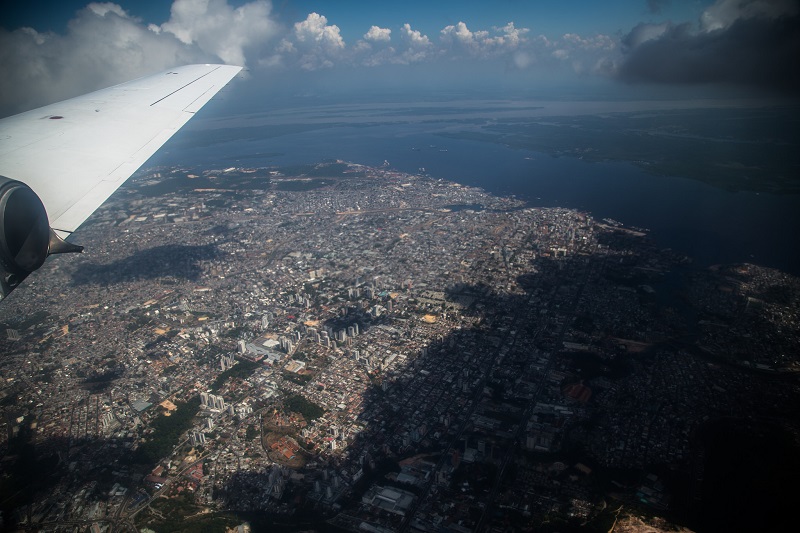From gray to green: An aerosol journey in the Amazon
Submitter:
Shilling, John E — Pacific Northwest National Laboratory
Area of research:
Aerosol Properties
Journal Reference:
Science
Aerosols—tiny particles in the air—have important effects on the earth’s energy balance and water cycle. The majority of the aerosol mass is made up of organic compounds that formed from precursor compounds released by plants and human activities. Understanding how precursor compounds evolve in the atmosphere and eventually end up as aerosol particles, and representing these processes in models, is one of the more complex challenges in atmospheric science. Using airborne data from the Green Ocean Amazon (GoAmazon 2014/15) field campaign, a research team led by scientists at the U.S. Department of Energy (DOE) collected and analyzed measurements of the chemical composition, sources, and evolution of aerosol in the urban plume from Manaus, Brazil, as it moved into the surrounding pristine Amazon tropical forest. The data analysis showed changes in the aerosol chemical properties as the plume moved downwind. The measurements also suggested that formation of organic aerosol in the Manaus plume occurred, at least in part, by a mechanism different from that seen in pollution from North American cities.
Impact
Measurements obtained from the DOE Atmospheric Radiation Measurement (ARM) user facility’s Gulfstream-159 (G-1) research aircraft during GoAmazon provide a unique set of observations for understanding aerosol chemistry. When compared to the outflow of many North American cities, the team’s analysis showed that, in the wet season, aging of the Manaus plume generated less organic aerosol downwind. These results have implications for modeling efforts and for understanding how urban pollution evolves in unique environments and affects the Amazon rainforest.
Summary
To date, most field studies of organic aerosol evolution have been conducted in the Northern Hemisphere. Far fewer studies have been performed in the Southern Hemisphere, where there is less land mass, fewer people, and therefore lower background concentrations of pollutants. GoAmazon G-1 deployments took place from February to March 2014 (wet season) and September to October 2014 (dry season). Researchers studied G-1 measurements of aerosol chemical composition and secondary organic aerosol formation and aging within the Manaus plume. The team found that, on average, organics dominated the particle chemical composition, constituting 80 percent of the total aerosol mass in both the wet and dry seasons. Sulfate constituted 14 percent, nitrate 2 percent, and ammonium 4 percent. This distribution was unchanged between seasons, despite significantly higher aerosol concentrations in the dry season.
When examining organic aerosol aging in the Manaus plume, researchers observed oxidation of organic particles and conversion of reduced organic aerosol to oxidized organic aerosol. Despite these changes in aerosol chemical composition, Δorg/ΔCO—a measure of the production of organic aerosol—was constant with aging because of the balance between the formation of oxidized, secondary organic aerosol and the loss of reduced, primary organic aerosol that is directly emitted into the atmosphere. Observations of constant Δorg/ΔCO contrasted with literature studies of the outflow of many North American cities, which reported significant increases in Δorg/ΔCO for the first day of plume aging. The difference was likely due to a combination of factors, including differences in emissions from Manaus and the surrounding tropical forest, lower levels of background pollution in the Amazon, and lower background organic aerosol concentrations.


